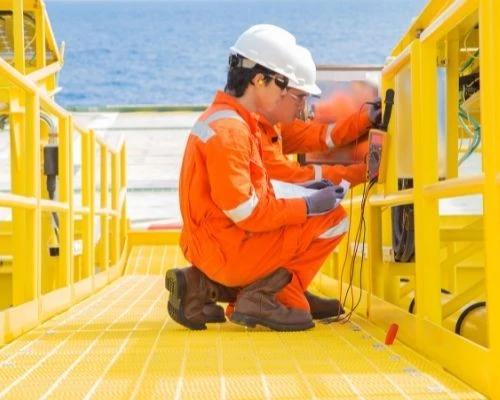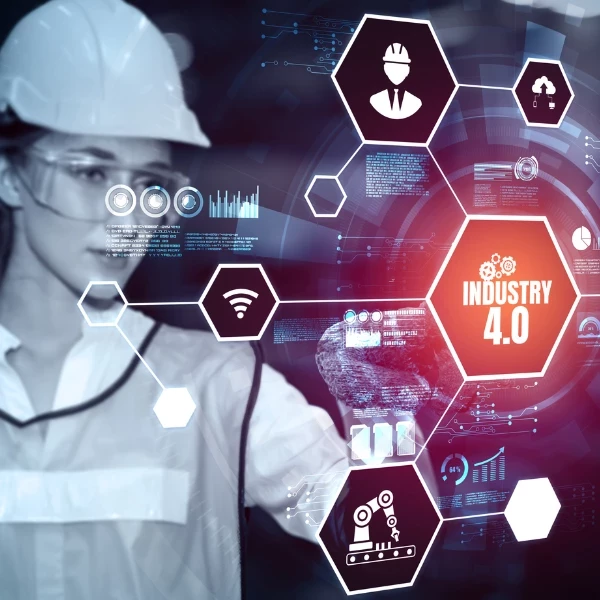Launching a Digital Twin? 3 Questions You Must Ask Yourself First
Add bookmark
Digital twins – virtual representations of a physical object or process - have the potential to transform how the oil and gas industry designs, builds and operates assets and processes. By creating a digital twin, oil and gas companies can simulate the impact of process changes, evaluate potential designs, monitor equipment, enhance worker training, and improve safety.
If done correctly, a digital twin can reduce costs, increase efficiency, and improve operations.
However, it is too easy to get lost in the technical complexities of delivering a digital twin implementation.
What are the pitfalls to avoid and how can you ensure you deliver ROI?
Oil and Gas IQ recently hosted a panel discussion on using Digital Twins to drive asset optimization, increase safety and transform workforce learning and development.
Our panelists - Nick Smart, Software Engineer at Chevron, Grigor Bambekov, Former SVP Business Transformation at Delek US Holdings and Anil Wadhwa, Former Executive Director - Digital Transformation at Baker Hughes – offered up practical advice on what it takes to get the most of your digital twin implementation.
Here’s a summary in the form of 3 questions you should ask yourself before you get started.
Question #1: How will you get and access high quality data?
The value of a digital twin relies on it being able to produce highly accurate digital simulations. Clearly, the output is only as good as the input. That's why data is the critical foundation for your digital twin.
Indeed, data quality is one of the biggest challenges that organizations face when starting out on their digital twin journey, with 85.7% of the digital event attendees watching the recent panel discussion citing it as their number one challenge. (Network infrastructure was a distant second with only 14.7% of attendees citing connectivity as their biggest challenge).

Image 1: Digital twin challenges. Source: Digital Twins in Oil and Gas Online event survey, May 2023.
The first step in any digital twin implementation is to ensure you have a data governance framework in place to ensure data integrity and connectivity from all your relevant data sources.
“The entire data strategy has to be tackled in a way that it can work and feed the digital twin because it is organic,” observes Grigor Bambekov. “Once it [the digital twin] starts working, if the data at the source is inconsistent or corrupted, then the digital twin is going to generate mistakes.”
Once data quality is assured the second step is to ensure that you have the network infrastructure in place to support timely access to the data.
“One of the key elements for Chevron [has been] a deep tie in integration with our network infrastructure and those foundational components,” says Nick Smart. “You could have the best piece of IOT equipment that is collecting all sorts of different data from all sorts of different sensors, but if there is not a way to safely deliver that information across a network it's all for nought.”
Question #2: How will you manage and scale your digital twin over time?
Business processes and assets are not static and are constantly changing over time. Equipment gets worn. The environment changes. New processes are developed. A digital twin needs to constantly be evolving in line with changes in business operations.
“There's a myth out there that you build digital twin once and you're done,” says Anil Wadhwa, Former Executive Director - Digital Transformation at Baker Hughes. “That's not the case. The digital twin has to be continuously managed and updated in order to stay relevant.”
Wadhwa gives the example of a digital twin of an oil well. He says that there are three components of the well that are constantly changing: the reservoir, the well bore condition and the equipment (such as artificial lift equipment). It is essential to capture those changes over time to ensure that the digital twin stays accurate, which is all the more important if you are planning to rely on it for safety, for instance.
Bambekov advises that even before embarking on a digital twins implementation you need to think about how you’re going to govern and evolve the digital twin.
“Once the digital twin is built, it will require management. It will require control. It will require connection, coordination, communication, and cooperation between different groups,” he says.
Question #3: What do you want to achieve with your digital twin?
There are many different use cases for digital twins. During the panel discussion event attendees were asked what they used their digital twin for. Image 2 shows the result. While predictive maintenance was the most common reason that our attendees were using digital twins (with 24% of the attendees reporting use of digital twins for this reason), other uses such as production efficiency, remote monitoring and operations, and facility design were not far behind.

Image 2: Use cases for Digital Twins. Source: Digital Twins in Oil and Gas Online Event Survey, May 2023.
"When we're talking about digital twins, we're really talking about collecting data to help make informed decisions on not only diagnostics and pieces of equipment but, as a whole, how can we improve our facilities?” says Chevron’s Nick Smart.
Bambekov agrees and cautions that you shouldn’t fall into the trap of trying to create a digital twin out of everything. You need to start with the most impactful assets and use cases once you know what you’re trying to achieve.
“Go after quality,” he says.
For the oil and gas companies that get it right, digital twins can be an important way of increasing operational efficiency, improving safety and delivering long term business value.
Interested in learning more about this topic?
You may want to attend our workshop “Capturing the Value of Digital Twins: How to Jumpstart Your Digital Twin Journey and Drive ROI Fast” at our upcoming Operational Excellence in Oil & Gas Summit. Now in its 14th year, the summit brings together over 400 senior level executives to share use cases and showcase trailblazing technologies that will transform your operations. Download the agenda for more information.






























